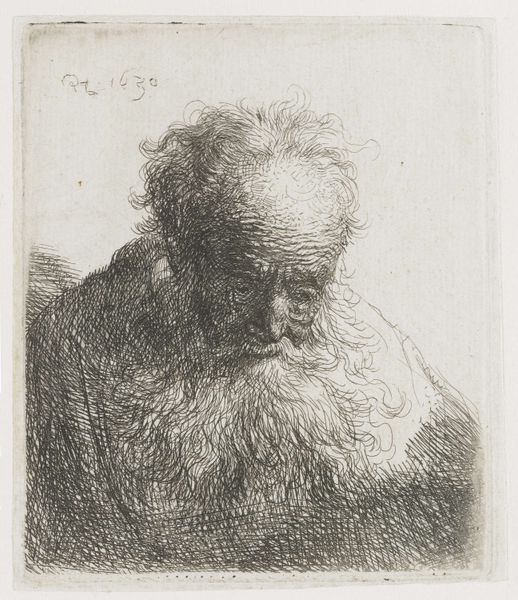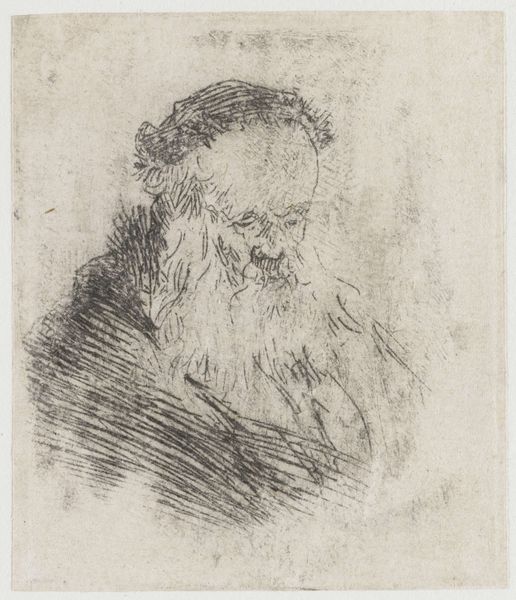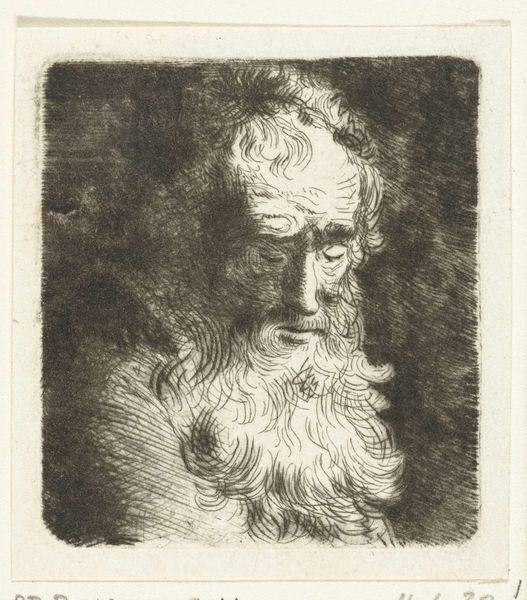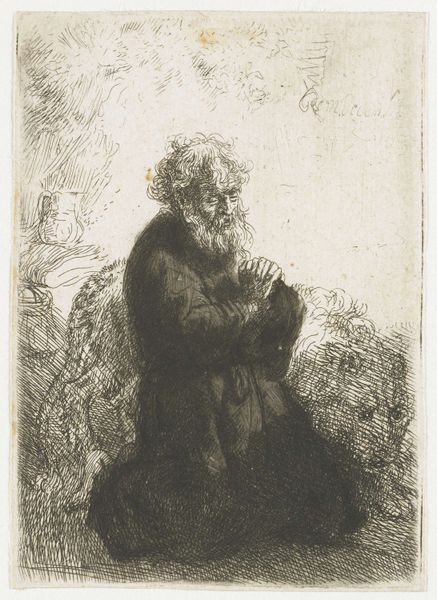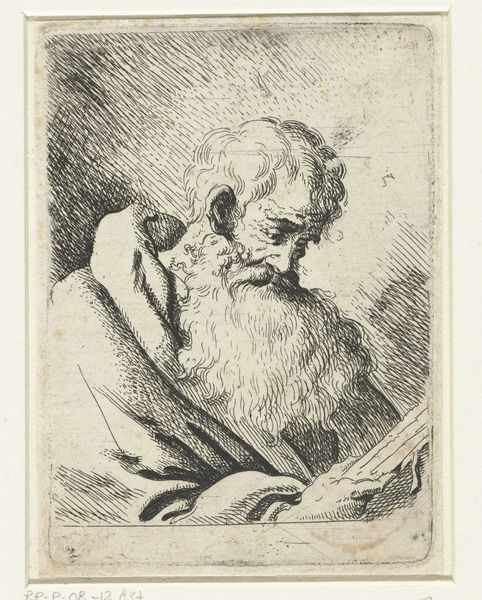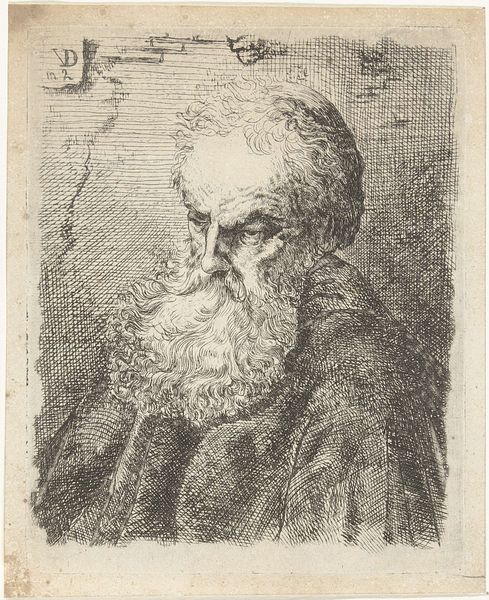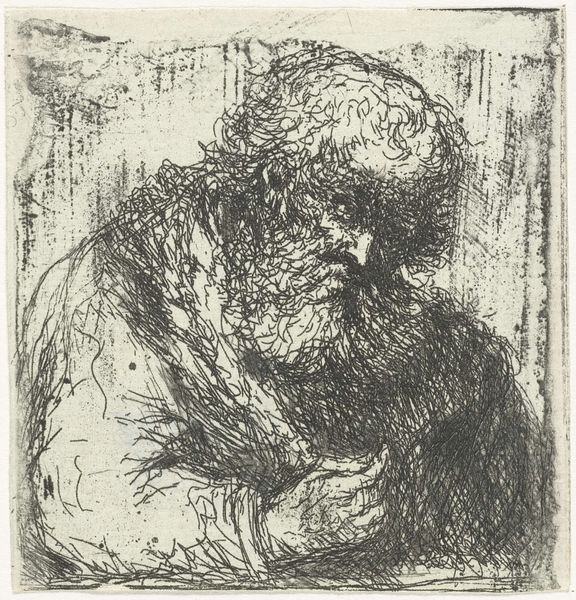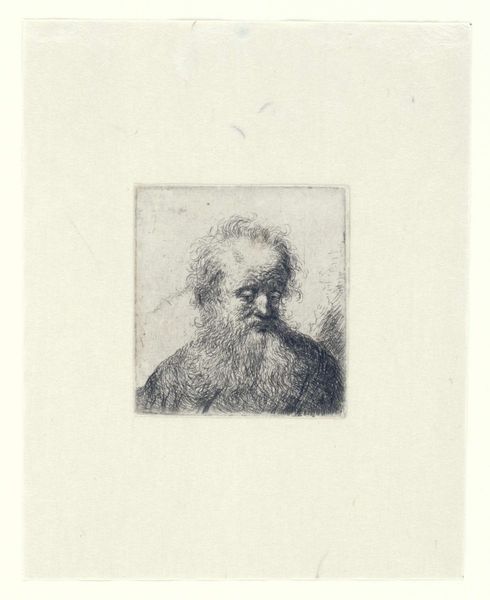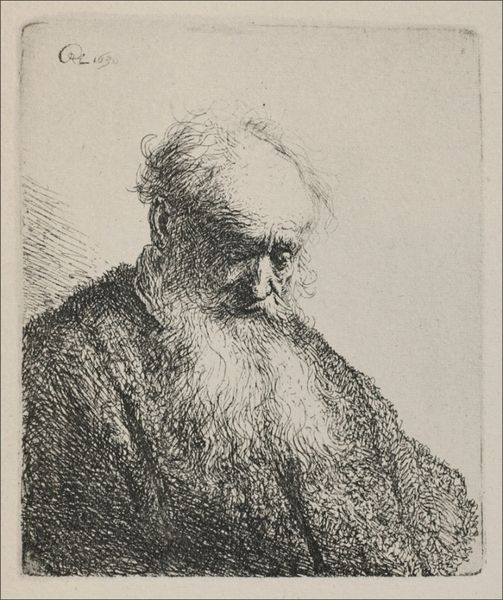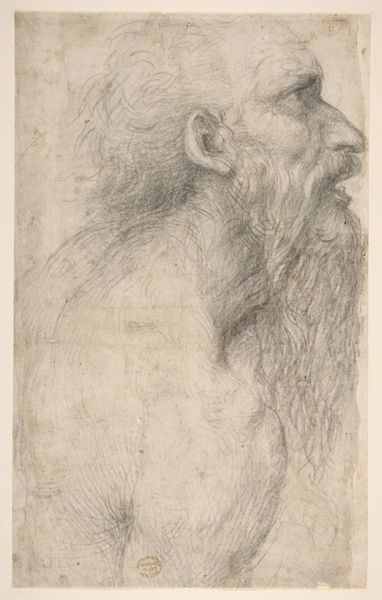
drawing, print, etching
#
portrait
#
drawing
#
baroque
#
dutch-golden-age
# print
#
etching
#
form
#
history-painting
#
realism
Dimensions: height 82 mm, width 72 mm
Copyright: Rijks Museum: Open Domain
Editor: Here we have Jan Lievens' etching, "Bust of an Old Man with a Long Beard," dating somewhere between 1625 and 1674. The sheer amount of line work creating shadow is striking, and the figure has a real sense of weight and melancholy. What do you see in this piece? Curator: Beyond the striking visual aspects, I see a portrait deeply embedded in its socio-political context. Think about the Dutch Golden Age. What did it mean to depict an aging man, likely not of nobility, with such gravity? It pushes against the idealized portraiture often reserved for the wealthy and powerful, wouldn't you agree? Editor: Definitely, there is an egalitarian quality to the image. So, what does situating this etching within the social context of the Dutch Golden Age reveal about its meaning? Curator: We need to consider class, power, and representation. This wasn’t a commission. Lievens chose to depict this subject. Why? Was it a study of human emotion? Or perhaps a silent commentary on who deserves to be memorialized through art? I wonder, what identities might have been intentionally excluded at the time, and does this etching provide an opportunity to revisit the past with greater equity and inclusion? Editor: It's almost subversive, giving dignity and permanence to someone likely considered insignificant. Do you see the use of etching and its reproducible nature amplifying its message of representation, potentially? Curator: Precisely. The relatively accessible medium democratizes the image. It allows for broader distribution, disrupting the elite control of visual narratives and posing pertinent questions of who gets to participate and who is remembered. Editor: So, seeing it not just as a portrait, but as a statement about societal values in the Dutch Golden Age adds new layers. It definitely pushes the boundaries of traditional art historical narratives. Curator: Exactly. This work reminds us to consider art's agency, questioning whose stories are told and whose remain unheard.
Comments
No comments
Be the first to comment and join the conversation on the ultimate creative platform.
